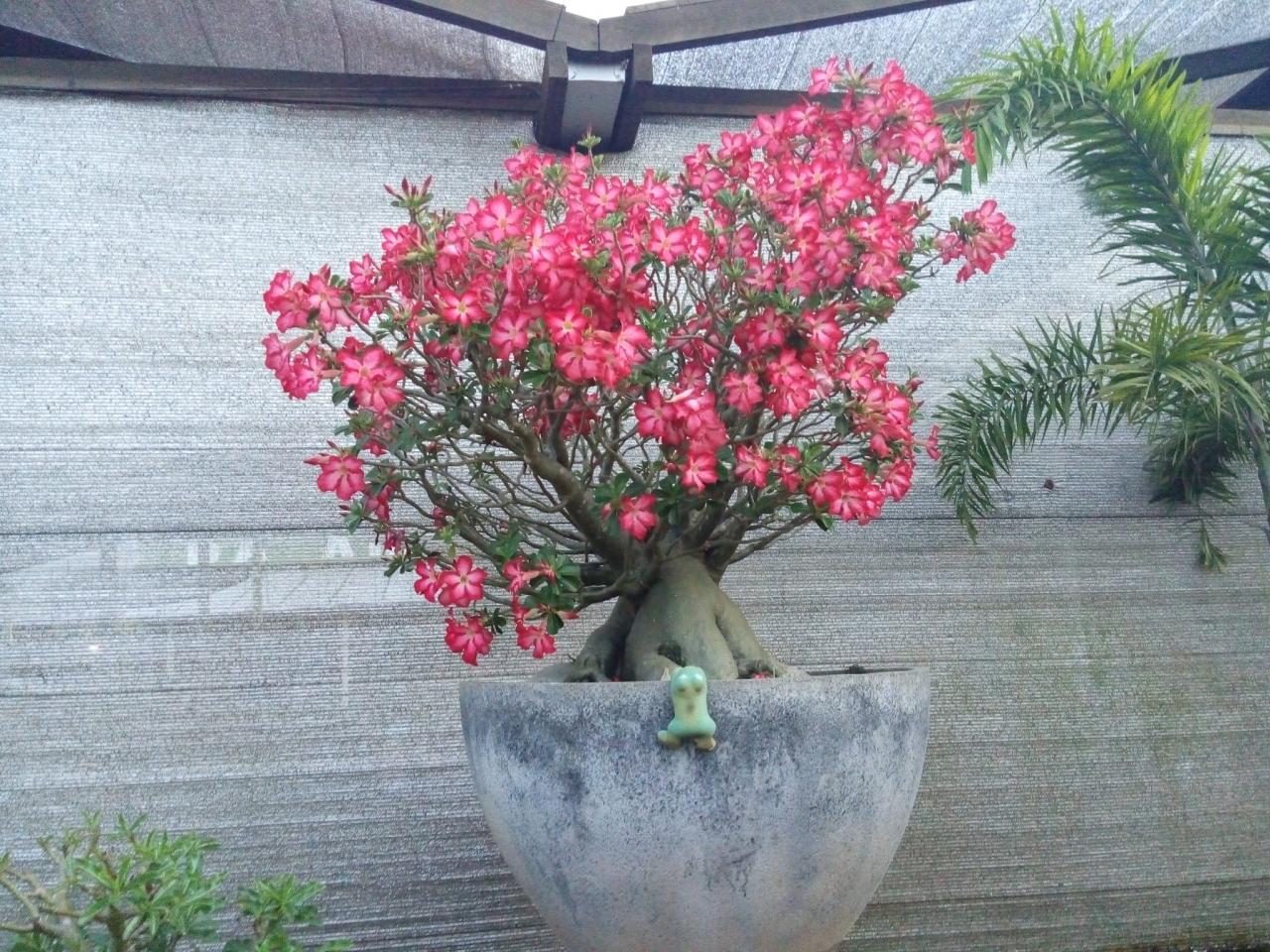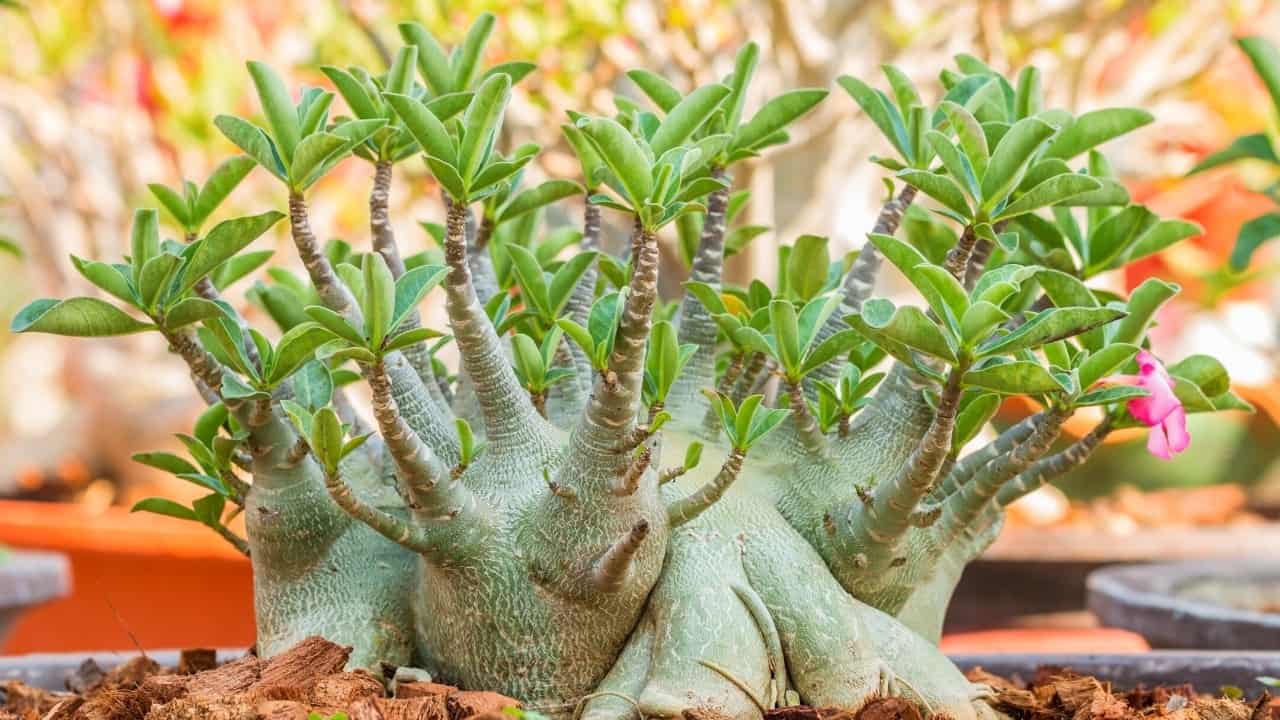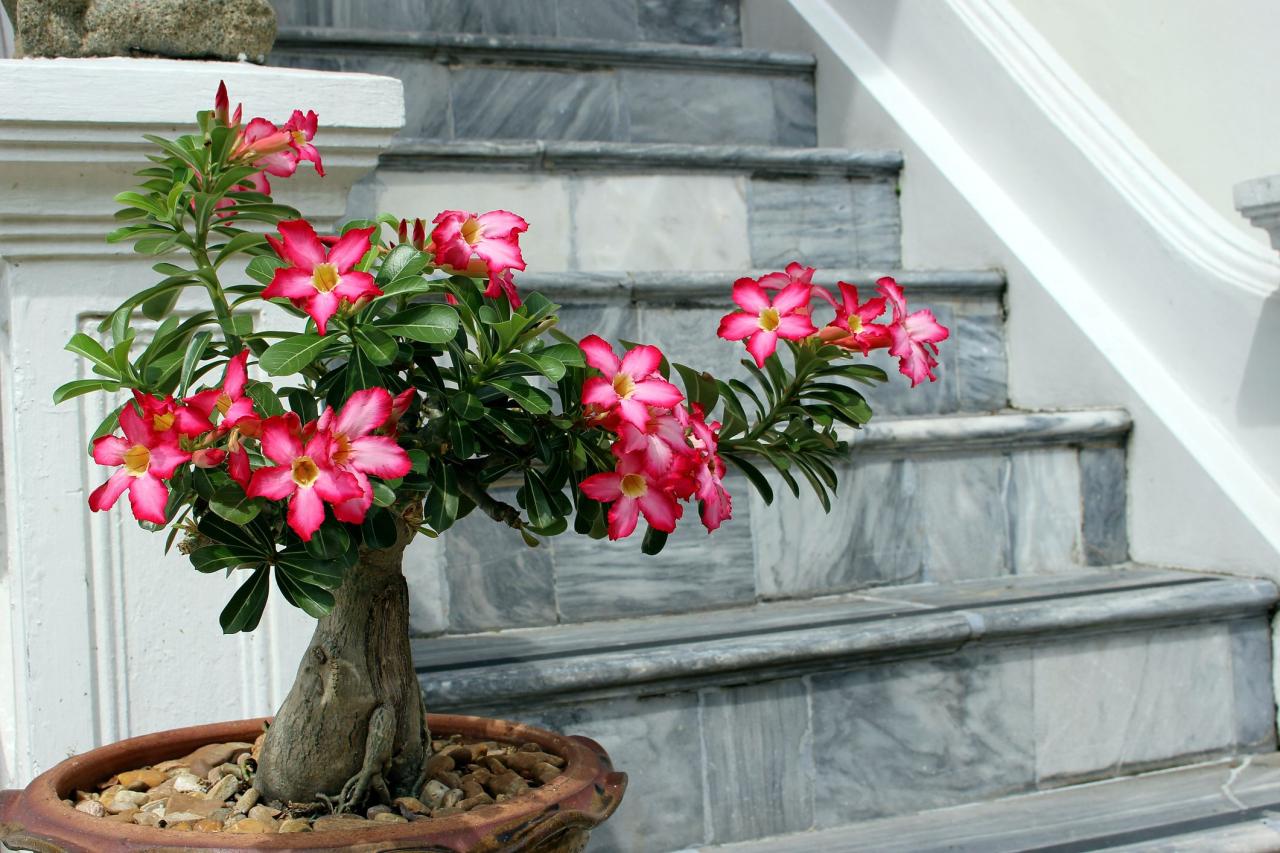The Desert Rose Bonsai Plant, known scientifically as *Adenium obesum*, is a strikingly beautiful succulent that has garnered the attention of bonsai enthusiasts around the globe. With its unique swollen trunk and colorful, trumpet-shaped flowers, this plant offers a stunning aesthetic and is an excellent choice for both novice and experienced gardeners. In this blog post, we’ll explore various aspects of the Desert Rose Bonsai, including its care requirements, propagation methods, and potential challenges. 🌸
What is the Desert Rose Bonsai?: Desert Rose Bonsai Plant
The Desert Rose Bonsai is a small tree that thrives in arid environments, making it a perfect addition to indoor collections or outdoor landscapes in warmer climates. Native to the African continent and parts of the Arabian Peninsula, this plant has adapted well to bonsai techniques, showcasing an impressive trunk structure and blooming beautifully during its flowering season.
Physical Characteristics
The Desert Rose is well-known for its distinctive characteristics:
- Foliage: Thick, leathery leaves that are dark green, giving the plant a lush appearance.
- Flowers: The plant produces stunning, vibrant flowers that can range from pink to red and white, adding a pop of color to any setting.
- Trunk: A swollen, bottle-shaped trunk that serves as a water reservoir, allowing it to survive in drought conditions.
Growing Conditions
To ensure your Desert Rose Bonsai thrives, you must replicate its natural growing conditions as closely as possible:
Light Requirements
Desert Roses require bright, indirect sunlight. Ideally, they should receive at least 6 hours of light daily. If you are growing indoors, placing them near a south-facing window is ideal.
Temperature and Humidity

This plant thrives in temperatures ranging from 70°F to 100°F (21°C to 38°C). It can tolerate brief periods of cooler temperatures but should be protected from frost. Regarding humidity, moderate levels are preferable, and it should not be exposed to overly humid environments for prolonged periods.
Soil Requirements
Desert Roses thrive in well-draining soil. A mix of cactus soil and perlite or sand works well to promote good drainage and prevent root rot.
Watering Your Desert Rose Bonsai
Watering is a crucial aspect of Desert Rose care. Here are some tips:
- Frequency: Water your plant when the top 1-2 inches of soil are dry. Overwatering can lead to root rot, which is detrimental to the plant.
- Method: Water thoroughly until water drains from the bottom. Ensure excess water does not pool in the pot.
- Seasonal Adjustment: During the growing season (spring and summer), your plant will need more water than in the dormant season (fall and winter).
Fertilizing Your Desert Rose Bonsai
To encourage vibrant blooms and healthy growth, regular fertilization is essential. Here’s a simple guide:
| Season | Fertilizer Type | Frequency |
|---|---|---|
| Spring | Balanced Fertilizer (NPK 10-10-10) | Every 4 weeks |
| Summer | Low Nitrogen Fertilizer (NPK 5-10-10) | Every 4-6 weeks |
| Fall | No Fertilizer | N/A |
| Winter | No Fertilizer | N/A |
Note: When using fertilizer, follow the instructions carefully to avoid nutrient burn.
Propagation Methods

Propagating a Desert Rose Bonsai can be a rewarding experience. There are primarily two methods to propagate this plant: from seeds or stem cuttings.
Seed Propagation
To propagate from seeds:
- Plant seeds in a well-draining potting mix.
- Keep the soil moist but not soggy.
- Place the pot in a warm, sunny location.
- Germination typically occurs within 2-3 weeks.
Stem Cutting Propagation, Desert Rose Bonsai Plant
This method involves taking cuttings from a mature plant:
- Choose healthy stems and cut them at a 45-degree angle.
- Allow the cut ends to dry for a day or two to form a callus.
- Plant the cuttings in a pot with well-draining soil.
- Keep the soil slightly moist until roots develop, usually within a few weeks.
Common Problems and Solutions
Even with the best care, Desert Rose Bonsai plants can encounter issues:
Pests
The most common pests are aphids and mealybugs. Use insecticidal soap or neem oil to treat infestations. 🌿
Leaf Drop
If your plant starts dropping leaves, it may be a sign of overwatering, underwatering, or sudden temperature changes. Check the soil moisture and environmental conditions to diagnose the issue.
Flower Issues
Plants that do not bloom may require additional light or a change in fertilization routine. Ensure they get enough sunlight and are fed appropriately during the growing season.
Final Thoughts
The Desert Rose Bonsai is a captivating plant that offers more than just beauty; it is a rewarding project for any plant lover. With proper care and attention, your Desert Rose can flourish, providing joy and stunning floral displays for years to come. 🌼 Remember to keep its unique growing requirements in mind, and you will enjoy a healthy, vibrant bonsai that will be the envy of all your gardening friends!
